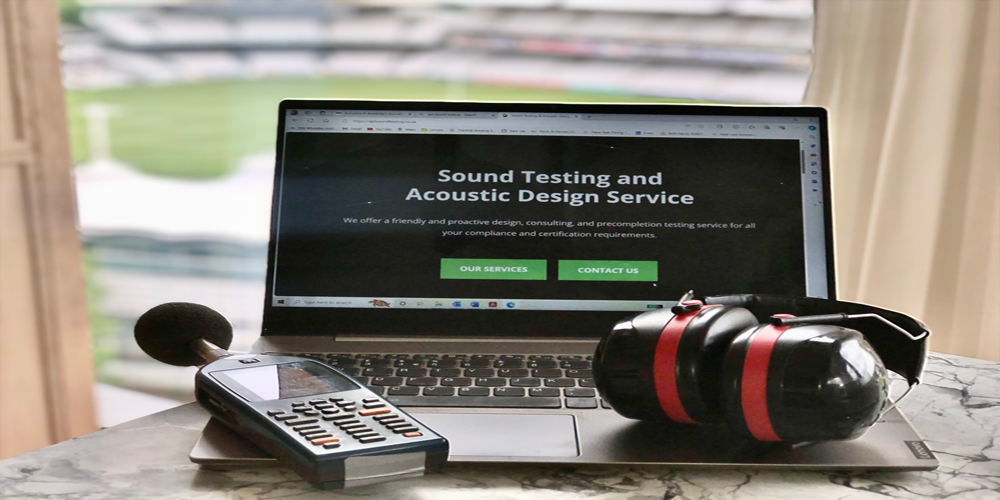
Pre and post Construction Sound Testing
Pre and post Construction Sound Testing
The pre and post Construction sound testing of floors is an important part of ensuring that buildings meet the required sound insulation standards for Building Regulations Part E and/or the sound insulation requirements set out in your lease conditions. Here’s a brief overview for both:
Pre-Construction Sound Testing Overview:
Purpose of the pre-works sound test: To establish the existing sound insulation performance of the floor partitions between you and your neighbour.
Sound testing process: the pre-works sound test is conducted before any construction work begins. It involves measuring the sound insulation levels of the floor partition to understand the baseline performance.
Importance of preconstruction sound testing: it helps in designing the necessary soundproofing measures to pass the sound test and/or improve the acoustic performance of the floor and ensure compliance with building regulations where required. It’s worth noting that we also offer an acoustic design service for party floors were required.
Post-Construction Sound Testing
Purpose of the post works sound test: To verify that the soundproofing measures implemented during construction have achieved the desired sound reduction for Building Regulations Part E
Sound testing process: the second test visit is conducted after the construction is completed, but before the building is occupied. It involves similar sound insulation measurements to those done pre-construction.
Importance of post construction sound testing: Ensures that the building meets the required sound insulation standards pf Part E and/or the lease conditions of the block. It also identifies if the new floor construction is as good/better than the existing floor construction.
Would you like more detailed information on any specific aspect of pre and post construction sound insulation testing? If so, please contact APT Sound Testing direct on 07775 623464.
Preconstruction sound testing methodology
The preconstruction sound testing methodology involves several steps to ensure accurate results. Here’s a general guide sound testing steps:
Planning the preconstruction sound test: Schedule the test before any construction work begins. Ensure the area is accessible and free from obstructions. Always make sure doors and windows are installed on the day of the test.
Hire a qualified sound testing company: employ the services of a sound testing company accredited by a recognised body, such as the UKAS – the United Kingdom Accreditation Service. It’s worth noting that we are UKAS accredited to undertake sound testing.
Equipment Setup: The sound test engineer, will set up equipment, including sound sources and receivers, on both sides of the floor partitions, i.e. in your apartment and your neighbour/s below. We also require full access into the neighbouring property below and/or above.
Undertake both Airborne and Impact Tests: always conduct both airborne sound tests (measuring sound transmission through the air i.e. TV, Radio and Speech) and impact sound tests (measuring sound from footsteps or dropped objects) wherever possible. These are the two types of tests required under Building Regulations Part E.
Acoustic data Collection and comparison: the sound test engineers will measure sound levels and compare them against the required standards of Building Regulations Part E.
Post construction sound testing methodology
Planning the post works sound testing: Schedule the test after construction is complete but before the building is occupied.
Hire a qualified sound tester: Ensure the tester has the correct accreditation such as UKAS etc. and follows the same standards as the pre-construction test.
Sound test equipment setup: Similar to pre-construction, the sound test engineers will set up equipment on both sides of the floor, so will need full access into both properties either side of the party floor.
Airborne and impact sound tests: Repeat the same tests as pre-construction to measure the sound insulation performance after construction works have been completed, so a direct comparison can be made between the acoustic performance of the old and new floor construction.
Acoustic data collection and reporting: The tester will collect data and provide a report detailing whether the sound insulation meets the required standards of Part E and/or the required lease conditions.
Contact APT Sound Testing
We hope the above article has been helpful. If you would you like more detailed information on any specific step or aspect of our pre and post works sound testing, or would like to book in a sound insulation test, please call APT Sound Testing on 01525 303905 or 07775623464, or email us at info@aptsoundtesting.co.uk